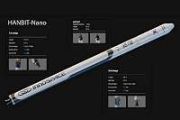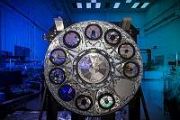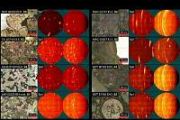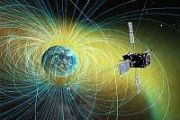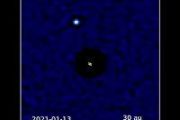
Copernical Team
A lunar base could start with a dome over a crater made of regolith
This request seems a bit unusual, so we need to confirm that you're human. Please press and hold the button until it turns completely green. Thank you for your cooperation!
Press and hold the button
If you believe this is an error, please contact our support team.
185.132.36.159 : 2ed7094c-d272-4c42-9409-069adfcf
Testing, testing, testing – Let’s Smile (episode 3)
 Video:
00:07:25
Video:
00:07:25
Smile is a brand-new space mission currently in the making. It will study how Earth responds to the solar wind and solar storms.
At the European Space Agency’s technical heart in the Netherlands, engineers have spent the last four months carrying out ‘spacecraft environment testing’ – putting Smile through its paces to make sure it is ready for the shaky rocket launch, the vacuum of space and the extreme temperatures it will face in orbit around Earth.
Now all complete, Smile is one step closer to launch in 2026.
This video provides a glimpse into the testing process. It
Φsat-2 begins science phase for AI Earth images

Φsat-2, a miniature satellite, has completed its commissioning and has begun delivery of science data, using algorithms to efficiently process and compress Earth observation images, as well as detect wildfires, ships, marine pollution and more.
Unlocking the Secrets of Cosmic Dust with the Webb Telescope
 Cosmic dust does far more than float through space. It's the raw material from which stars, planets and possibly even life emerge. Yet astronomers have long puzzled over where this vast amount of dust comes from and what it's made of.
Dr. Noel Richardson, an associate professor of Physics and Astronomy at Embry-Riddle Aeronautical University, and his students are answering these questions
Cosmic dust does far more than float through space. It's the raw material from which stars, planets and possibly even life emerge. Yet astronomers have long puzzled over where this vast amount of dust comes from and what it's made of.
Dr. Noel Richardson, an associate professor of Physics and Astronomy at Embry-Riddle Aeronautical University, and his students are answering these questions Scientists uncover mechanism that causes formation of planets
 Instead of a tempest in a teapot, imagine the cosmos in a canister. Scientists have performed experiments using nested, spinning cylinders to confirm that an uneven wobble in a ring of electrically conductive fluid like liquid metal or plasma causes particles on the inside of the ring to drift inward. Since revolving rings of plasma also occur around stars and black holes, these new findings imp
Instead of a tempest in a teapot, imagine the cosmos in a canister. Scientists have performed experiments using nested, spinning cylinders to confirm that an uneven wobble in a ring of electrically conductive fluid like liquid metal or plasma causes particles on the inside of the ring to drift inward. Since revolving rings of plasma also occur around stars and black holes, these new findings imp UK hopes to bolster space weather forecasts with Europe's first solar storm monitor
 A new UK-led satellite mission concept aims to strengthen the country's position in space weather observation and forecasting by deploying a suite of homegrown scientific instruments on a low-cost spacecraft in low-Earth orbit.
The proposal was presented Wednesday at the Royal Astronomical Society's National Astronomy Meeting 2025 in Durham.
UK-ODESSI (UK-Orbital pathfinDEr for Space
A new UK-led satellite mission concept aims to strengthen the country's position in space weather observation and forecasting by deploying a suite of homegrown scientific instruments on a low-cost spacecraft in low-Earth orbit.
The proposal was presented Wednesday at the Royal Astronomical Society's National Astronomy Meeting 2025 in Durham.
UK-ODESSI (UK-Orbital pathfinDEr for Space Quantum Secure Space Tech Partnership Launched by Space TS and Synergy Quantum
 In a strategic move to reinforce India's space sovereignty in the quantum era, Space TS and Synergy Quantum have signed a Memorandum of Understanding to co-develop the nation's first indigenous quantum-secure satellite systems and supporting technologies.
This collaboration unites Space TS's expertise in satellite systems engineering with Synergy Quantum's leadership in post-quantum cybers
In a strategic move to reinforce India's space sovereignty in the quantum era, Space TS and Synergy Quantum have signed a Memorandum of Understanding to co-develop the nation's first indigenous quantum-secure satellite systems and supporting technologies.
This collaboration unites Space TS's expertise in satellite systems engineering with Synergy Quantum's leadership in post-quantum cybers Chang'e-6 mission reveals ancient volcanic and magnetic secrets from Moon's farside
 The Moon's near and far sides differ dramatically in terrain, crust, and volcanic history-a mystery that has long perplexed scientists. This disparity is now better understood thanks to China's Chang'e-6 mission, which launched on May 3, 2024, and returned 1,935.3 grams of lunar material from the South Pole-Aitken Basin (SPA) on June 25, 2024. The SPA, a 2,500-kilometer-wide structure, is the ol
The Moon's near and far sides differ dramatically in terrain, crust, and volcanic history-a mystery that has long perplexed scientists. This disparity is now better understood thanks to China's Chang'e-6 mission, which launched on May 3, 2024, and returned 1,935.3 grams of lunar material from the South Pole-Aitken Basin (SPA) on June 25, 2024. The SPA, a 2,500-kilometer-wide structure, is the ol The Mars mission that could prep for a human landing
 If we're to land humans on Mars in the coming decades, we'll have to know what challenges await them when they get there.
Enter M-MATISSE, a potential precursor to a crewed mission to the Red Planet which could use UK instrumentation being promoted at the Royal Astronomical Society's National Astronomy Meeting 2025 in Durham to revolutionise our understanding of space weather on Mars.
If we're to land humans on Mars in the coming decades, we'll have to know what challenges await them when they get there.
Enter M-MATISSE, a potential precursor to a crewed mission to the Red Planet which could use UK instrumentation being promoted at the Royal Astronomical Society's National Astronomy Meeting 2025 in Durham to revolutionise our understanding of space weather on Mars. Newly discovered interstellar object 'may be oldest comet ever seen'
 A mystery interstellar object discovered last week is likely to be the oldest comet ever seen - possibly predating our solar system by more than three billion years, researchers say.
The "water ice-rich" visitor, named 3I/ATLAS, is only the third known object from beyond our solar system ever spotted in our cosmic neighbourhood and the first to reach us from a completely different region o
A mystery interstellar object discovered last week is likely to be the oldest comet ever seen - possibly predating our solar system by more than three billion years, researchers say.
The "water ice-rich" visitor, named 3I/ATLAS, is only the third known object from beyond our solar system ever spotted in our cosmic neighbourhood and the first to reach us from a completely different region o 





